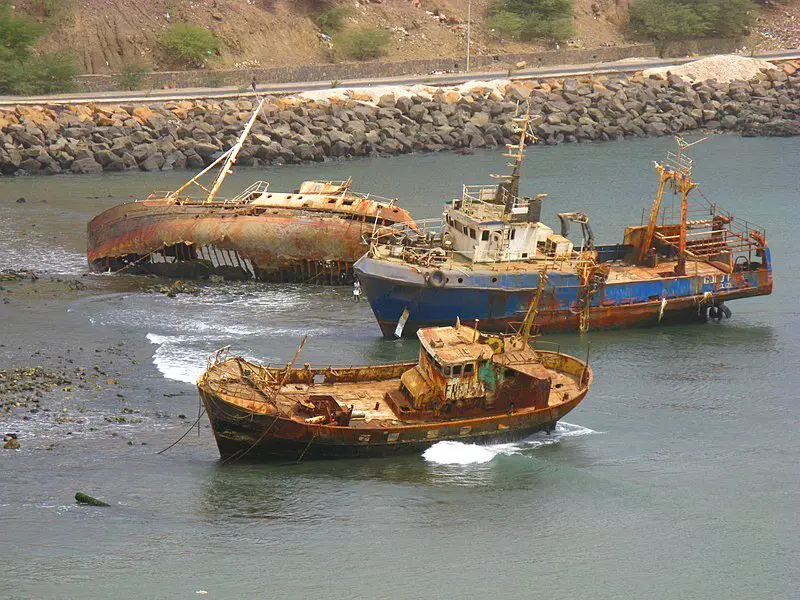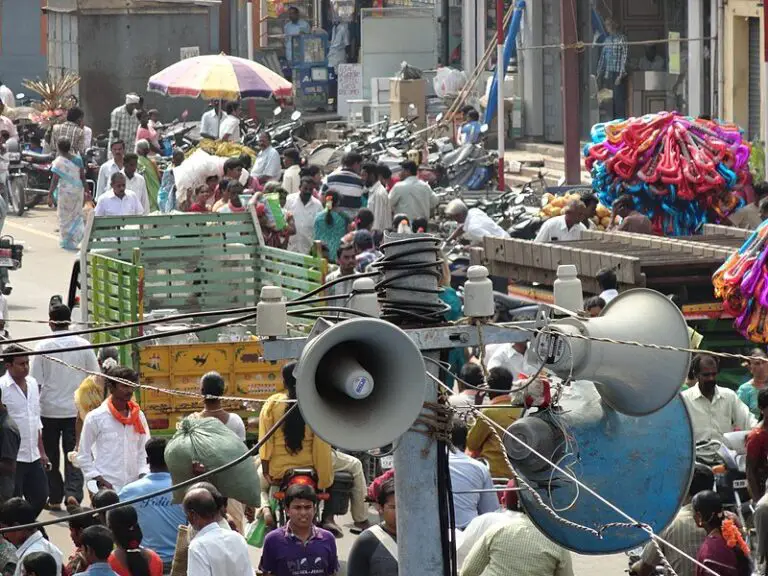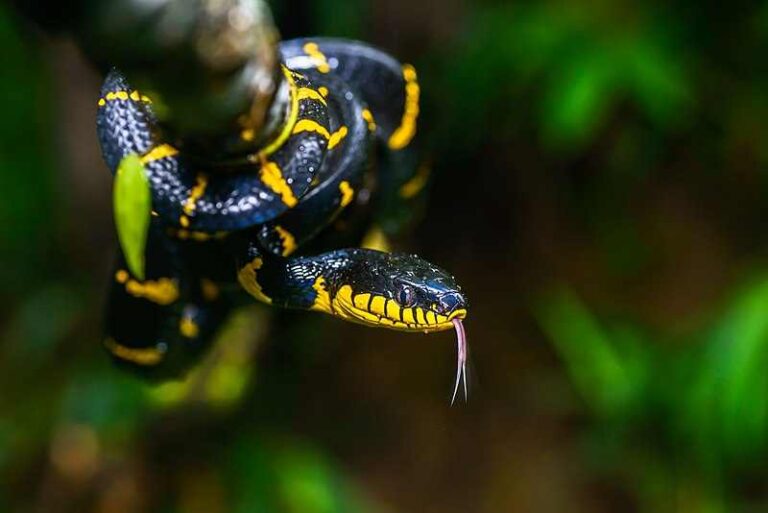7 Effects of Corrosion and Characteristics Explained
Effects of corrosion are; equipment inefficiency and damage, engineering structural failure/infrastructural damage, health and safety risks, resource depletion, property devaluation, automobile, ship and aircraft-structural deterioration, and physicochemical alteration.
This article discusses the effects of corrosion, as outlined below;
-Effects of Corrosion on Industries
-Effects of Corrosion on The Environment and Humans
-Effects of Corrosion On The Economy
-Effects of Corrosion on Metals
-Effects of Corrosion on Industries
Effects of corrosion on industries are; equipment inefficiency/damage, and engineering structural failure/infrastructural damage.
1). Equipment Inefficiency and Damage (as one of the Effects of Corrosion on Industries)
Damages caused by corrosion may affect buildings, oil and gas facilities, as well as all kinds of equipment; including those used in manufacturing, energy resource management, and electricity generation, among other applications.
Corrosion of equipment is a relatively-common scenario, because several of these equipment are significantly comprised of metallic materials like steel, which are used mainly due to their superior mechanical strength for heavy applications.
Effects of corrosion on machinery are generally degrading; and this is due to the fact that corrosion is itself a deteriorative process that makes metals lose their structural and chemical integrity, while becoming porous and deformed.
Equipment on which the effects of corrosion can be observed include components of power plants like turbines, generator-engines, as well as conduits and crushers in the mining and petrochemical/petroleum industries.
Causes of corrosion of equipment are numerous, and often act because of the operational conditions of the equipment themselves.
For example, acidic, toxic ambient media are known to facilitate the corrosion of equipment used in oil and gas production [12]. Also, the working conditions of equipment may go a long way to determine the type(s) of corrosion to which these equipment are subjected.
For example, high-temperature corrosion is driven by high thermal energy-working conditions of machinery like gas turbines [9]; while localized corrosion may occur in welded joints of underwater equipment in (acidic) marine environments.
In summary, the effects of corrosion on industrial equipment include loss of efficiency, and eventual damage. Higher rates and intensities of corrosion are equivalent to shorter lifespans for affected equipment [1].

2). Engineering Structural Failure/ Infrastructural Damage
A consequence of the degrading effect of corrosion on materials is failure of engineering structures, and/or infrastructural damage.
Engineering structural failure is an ultimate outcome of the effect of corrosion on buildings, which is generally capable of affecting both concrete and steel components.
In structural engineering, it is well-known that corrosion affects civil structures in a negative manner by causing their components to lose shear strength and load-bearing capacity [2].
Such adverse effects can be observed in different infrastructure including road pavements, bridges and water dams, in both urban and sub-urban areas.
The loss of bearing capacity can be attributed to deterioration of steel bars used to reinforce concrete structures [3]. It may also be due to the direct effect of corrosive forces on concrete itself; which is a fairly-common occurrence in areas prone to acid rains and other reactive conditions.
The greatest possible danger of corrosion with respect to engineering structures is failure; which is associated with negative economic effects and social risk.

-Effects of Corrosion on The Environment and Humans
Effects of corrosion on humans and the environment include health and safety risks; which are created by altered environmental conditions, including water, soil and air quality.
3). Health and Safety Risks (as one of the Effects of Corrosion on The Environment and Humans)
Consequences and effects of corrosion in daily life are those which affect humans (and other biotic components of the ecosystem) directly and instantaneously.
Major effects of corrosion on humans come from environmental changes including biological and physicochemical; which accompany the oxidation and disintegration of metals.
An example of this is the release of toxins into soil and water from large-scale corrosion of metallic waste in landfills; leading to land and water pollutions, with associated health/safety risks and consequences. Another example is exposure to hydrocarbon pollutants from corrosion-induced oil spills. Corroding water pipes that release loose fragments of metallic oxides and hydroxides into the water constitute another instance of the negative dynamic between corrosion and health/safety.
The health and safety-related consequences of corrosion include; hazardous accidents from failed structures and equipment, ingestion of harmful metallic pollutants in water and plant-biomass, as well as gastrointestinal, respiratory and dermal irritation from exposure to corrosion products.
These are different from the risk-factors of corrosion which include; high humidity, acidity, metallic reactivity, temperature and electromagnetic radiation, among other driving factors.
People who are vulnerable to health and safety risks of corrosion include workers in metal-dependent industries (which include virtually all industries), road users, and others in residential and public environments who have daily and/or regular contact with corrosion-susceptible metals, either directly or indirectly.
-Effects of Corrosion On The Economy
Effects of corrosion on the economy are; resource depletion, property devaluation, as well as deterioration of automobiles, ships and aircrafts.
4). Resource Depletion
One of the ways in which corrosion affects the environment is through depletion of resources.
Obviously, corrosion degrades and destroys metal products, which ultimately come from ore materials that are non-renewable and extracted from the Earth's crust. The continued occurrence of corrosion implies that as metals are being lost, more ore material will be mined, thereby speeding up the rate at which natural ore reserves are depleted.
Corrosion can also contribute to the depletion of resources being contained by corroding conduits and vessels. Examples of these can be found in the transport of fluid-phase (liquid and gaseous) energy resources like natural gas and petroleum, where intense localized corrosion or stress corrosion cracking can create crevices that allow the resources to leak and escape from pipelines.
The same can be said of water resources being stored or transported using corroding vessels.
Rectifying corrosion defects and damages also causes resource depletion in the form of fiscal expenditure [8], and the use of fossil fuels like coal and gasoline to generate electricity for galvanization and other control/preventive measures.
5). Property Devaluation (as one of the Effects of Corrosion on The Economy)
Due to its other effects on materials and structures, such as reduction of bearing capacity, corrosion often reduces the economic value of materials.
Properties including buildings, equipment and vehicles, are all devalued when subjected to intensive corrosion. This is because they lose their aesthetic and mechanical integrities to the oxidative and leaching effects of corrosive agents.
Studies estimate up to 4% GDP losses per annum due to corrosive degradation in the United States [4].
6). Automobile, Ship and Aircraft-Structural Deterioration
The effect of corrosion on aluminum and other similar metals is similar to its effect on iron and its alloys; which comprises of oxidative transformation and physicochemical change.
This in turn explains the effect of corrosion on ships, aircrafts and automobile vehicles.
Corrosion affects ships structures adversely, and accounts for as high as 90% of marine vessel-failures [10].
Effects of corrosion on ships is particularly severe because these vessels operate in acidic, saline ambient media (namely, sea water). The presence of chloride salts and low pH sets up an electrochemical reaction process that causes ships to deteriorate and become damaged with continuous use [11].
Corrosion affects structural integrity of not only ships, but all marine structures including the components (like foundation) of offshore wind turbines and wave conversion systems. This is because oxidative deterioration reduces the tensile strength of metallic structures, and causes a general decline in mechanical resilience [6].
The effects of corrosion on aircrafts and automobiles are similar to its effects on marine vessels; and involves progressive loss of aesthetic and mechanical properties, low tensile strength, surficial irregularity and deformation, among others.

-Effects of Corrosion on Metals
Effects of corrosion on metals include all forms of physicochemical alteration that occur in the process of corrosive deterioration.
7). Physicochemical Alteration (as one of the Effects of Corrosion on Metals)
Corrosion affects metal properties by causing a change in the chemical makeup of these metals, mainly through oxidation.
Chemical change that occurs in the process of corrosion may lead to changes in physical properties like; ductility, hardness, malleability, color, volume, weight and geometry.
When metal corrodes, chemical changes including hydroxide and oxide formation occur.
Physical and mechanical aspects of the metal experience alteration as a result of these chemical changes.
The specific nature of changes that occur in corrosion depend on the type of corrosion involved and its severity; so that pitting corrosion will involve physical changes like the formation of pockmarks from microcells where chemical action is concentrated [7], while uniform corrosion will involve volume and weight losses with relatively-minimal surface deformation.
Factors like pH directly influence the degree of alteration that occurs in corroding metal [5].
Conclusion
Effects of corrosion are;
1. Equipment Inefficiency and Damage
2. Engineering Structural Failure/ Infrastructural Damage
3. Health and Safety Risks
4. Resource Depletion
5. Property Devaluation
6. Automobile, Ship and Aircraft-Structural Deterioration
7. Physicochemical Alteration
References
1). Abboud, P.; Touma, K.; Cherfan, J.; Asmar; T. (2021). "Effect of corrosion on different types of metals." Available at: https://doi.org/10.13140/RG.2.2.14371.32807. (Accessed 14 May 2023).
2). Alemdar, Z. F.; Alemdar, F. (2023). "Investigation of Corrosion Effects on Collapse of Truss Structures." Buildings 13(3):826. Available at: https://doi.org/10.3390/buildings13030826. (Accessed 14 May 2023).
3). Bossio, A.; Fabbrocino, F.; Lignola, G. P.; Monetta, T.; Bellucci, F.; Manfredi, G.; Prota, A. (2016). "Effects of Corrosion on Reinforced Concrete Structures." World Heritage and Degradation, Capri (Italy). Available at: https://www.researchgate.net/publication/301685463_Effects_of_Corrosion_on_Reinforced_Concrete_Structures. (Accessed 14 May 2023).
4). Chen, X.; Zhang, Z.; Zhang, H.; Yan, H.; Liu, F.; Tu, S. (2022). "Influence of Air Pollution Factors on Corrosion of Metal Equipment in Transmission and Transformation Power Stations." Atmosphere 2022, 13, 1041. Available at: https://doi.org/10.3390/atmos13071041. (Accessed 14 May 2023).
5). Garrido, J. C. F.; Castilla-Gutierrez, J.; Sarmiento, A. M.; Grande, J. A. (2022). "Corrosion of Carbon Steel in Extreme Environments by Acid Mine Water: Experimental Study of the Process Using a Factorial Analysis Tool." Minerals 12(8):1030. Available at: https://doi.org/10.3390/min12081030. (Accessed 14 May 2023).
6). Kumar, S. S. K.; Londe, N. V.; Kumar, K. D.; Kittur, M. I. (2018). "A Review on Deterioration of Mechanical Behaviour of High Strength Materials under Corrosive Environment." IOP Conference Series Materials Science and Engineering 376(1):012106. Available at: https://doi.org/10.1088/1757-899X/376/1/012106. (Accessed 14 May 2023).
7). Ryl, J. (2020). "Special Issue: Recent Advances in Corrosion Science." Materials (Basel). 2020 Apr 19;13(8):1927. Available at: https://doi.org/10.3390/ma13081927. (Accessed 14 May 2023)..
8). Sastri, V. S. (2015). "Consequences of Corrosion." Challenges in Corrosion (pp.317-402). Available at: https://doi.org/10.1002/9781119069638.ch5. (Accessed 14 May 2023).
9). Sumner, J.; Encinas-Oropesa, A.; Simms, N. J.; Oakey, J. (2011). "High temperature oxidation and corrosion of gas turbine component materials in burner rig exposures." Materials at High Temperatures 28(4):369-376. Available at: https://doi.org/10.1179/096034011X13198126967382. (Accessed 14 May 2023).
10). Urbahs, A; Savkovs, K.; Riikuris, G.; Andrejeva, D. (2018). "Corrosion and Wear Analysis in Marine Transport Constructions." Available at: https://doi.org/10.1515/tae-2018-0001. (Accessed 14 May 2023).
11). Xu, Y.; Xia, D.-H.; Zhang, J.; Liu, G. (2023). "Mechanical Failure and Metal Degradation of Ships and Marine Structures." Metals 2023, 13, 272. Available at: https://doi.org/10.3390/met13020272. (Accessed 14 May 2023).
12). Yang, J.; Li, R.; Chen, L.; Hu, Y.; Dou, Z. (2021). "Research on Equipment Corrosion Diagnosis Method and Prediction Model Driven by Data." Process Safety and Environmental Protection 158(12). Available at: https://doi.org/10.1016/j.psep.2021.12.006. (Accessed 14 May 2023).





